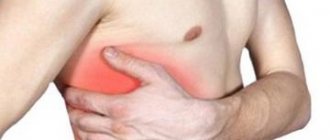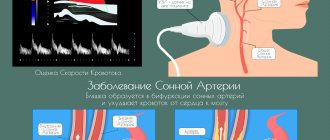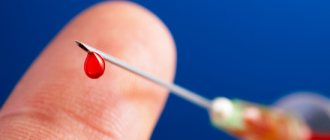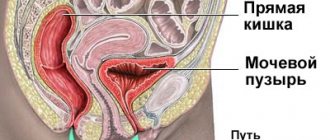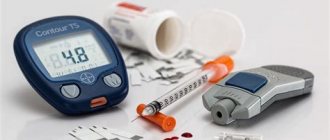In adult representatives of the fair sex, the urge to urinate occurs from 4 to 8 times per day. This is the average figure for a volume of liquid drunk up to 1600 ml. These indicators are influenced by the temperature in the room, as well as the amount of coffee, green tea and herbal infusions consumed. An adult should urinate no more than once at night. If these indicators become higher, then we can talk about a deviation from the norm. Frequent urination in women without pain occurs for a number of reasons that are important to understand.
Ask a Question
Why does frequent urination occur?
Physiological reasons
In the absence of provoking diseases, the causes of short-term pollakiuria are:
- Drinking plenty of fluids and diet.
Frequent urination follows drinking large amounts of fluid. Other possible provoking factors include taking drinks with a diuretic effect (coffee), including watermelons, cucumbers, and melons in the diet. - Pregnancy period.
As the uterus grows, it puts pressure on the bladder, and in the later stages “lies” on it, which causes a feeling of fullness of the detrusor and the appearance of urges even with a slight filling of the organ. - External influences.
Due to changes in metabolism and renal vascular tone, mictions become more frequent during hypothermia and exposure to stressful situations.
Infectious cystitis
The most common cause of pollakiuria is nonspecific infectious acute cystitis and chronic inflammation of the bladder during periods of exacerbation. Mictions are painful, with burning and stinging at the final stage. Pain above the womb is detected, sometimes - cloudy urine, a slight increase in body temperature. Taking into account gender and characteristics of hormonal status, the following variants of the disease are distinguished:
- Among women.
The pathology is widespread, which is explained by the wide and short urethra, the ease of penetration of infectious agents from the vulva, vagina and rectum. - In pregnant women.
Hypothermia and common acute infections act as provoking factors. Pollakiuria is combined with pain and urgency. In the postpartum period, urinary retention is common. - During menopause.
The number of mictions sometimes reaches 30 per day. There is constant pain in the lower abdomen. A chronic course with periodic relapses is revealed. - In men.
It is rare and is provoked by diseases of the male genital organs (often infectious-inflammatory) and urological pathologies accompanied by stagnation of urine. Along with frequent urination, hematuria, nocturia, and stranguria are observed.
Specific tuberculous cystitis occurs when the pathogen spreads through urine in patients with renal tuberculosis. Characterized by weakness, weight loss, strangury, urgency, pain above the pubis.
Non-infectious cystitis
Interstitial cystitis typically has a chronic course. At first, the symptoms are mild. As the morphological changes in the organ worsen, dysuric disorders increase: pollakiuria, nocturia, and incontinence occurs. Radiation cystitis develops during or after radiation therapy. In acute inflammation, the symptoms resemble ordinary cystitis. In the chronic form, there is a persistent increase in urination, incontinence, and imperative urges.
Pollakiuria
Change in bladder volume
A shriveled bladder (SUB) develops as a result of tuberculosis, interstitial and chronic radiation cystitis, and some other pathologies. The number of urinations is up to 20 or more times a day. Pollakiuria is complemented by nocturia and urge incontinence. One of the causes of SMP is long-term paracystitis.
Frequent urination during paracystitis occurs at the initial stage, during the formation of an abscess, and is complemented by intense pain and intoxication syndrome. Then the abscess breaks through, a large amount of pus is released from the urethra, and the condition returns to normal. In the chronic course, replacement of the peri-vesical tissue with fibrous tissue is observed with the formation of SMP and the re-development of pollakiuria.
With a ureterocele, the lower part of the ureter dilates and bulges into the bladder cavity. With large hernias, the volume of the detrusor decreases, which causes rapid accumulation of urine in the remaining space. Urine is released frequently, in small portions. When the second ureter is blocked, acute hydronephrosis may form; when a hernia descends into the urethra in women, complete urinary retention may occur.
Urethral diseases
Acute nonspecific bacterial urethritis is manifested by burning, itching, pain during voiding, and the appearance of mucopurulent or purulent discharge from the urethra. The general condition is not disturbed. Pollakiuria, usually minor, is caused by unpleasant sensations in the urethra. Urethral diverticula often remain asymptomatic for a long time. With the development of complications, difficulties arise, frequent urination, dysuria, incontinence, and pain in the groin.
STI
The appearance of symptoms in sexually transmitted infections is associated with the development of specific urethritis. Pollakiuria is observed with mycoplasmosis in men. Decreased libido and erectile dysfunction are combined with pollakiuria, nocturia, cramps, pain, swelling, and hyperemia. Gonorrhea manifests itself suddenly, manifested by pain, burning, and creamy purulent discharge. When the posterior part of the urethra is affected in men, significant hyperthermia is determined. Frequent urination is sometimes detected with trichomoniasis, chlamydia, and candidiasis in men. Expressed vaguely.
Kidney diseases
Pollakiuria accompanies the following renal pathologies:
- Pyelonephritis.
In the acute form there is no symptom. The chronic course is characterized by appetite disturbances, cephalgia, and weakness. Possible lower back pain. - Glomerulonephritis.
In patients with an acute process, the amount of urine first decreases, then increases. At the second stage, frequent urination is detected. Other signs are facial swelling and increased blood pressure. - Urolithiasis disease.
Pollakiuria becomes one of the manifestations of renal colic. Extremely intense pain in the lumbar region, anxiety, nausea, and vomiting are detected. With further advancement of the stone, blockage of the urinary tract is possible. Sometimes reflex anuria develops. - Sand in the kidneys.
As in the previous case, the symptom appears when microconcretions move. Dysuria and frequent urge are complemented by a feeling of incomplete emptying of the detrusor, pain in the lumbar region, radiating to the abdomen or groin area.
Neurological disorders
The development of pollakiuria is typical for an overactive bladder. The pathology accompanies multiple sclerosis and some types of polyneuropathy. Nocturia is observed in combination with categorical urge and urgency incontinence or without them. In patients with an overactive neurogenic bladder, frequent urination is complemented by incontinence and autonomic disorders. Etiofactors include spinal cord injuries, circulatory disorders, encephalitis, strokes, and malformations of the brain and spinal cord.
Andrological diseases
Most often, the symptom is found in diseases of the prostate gland. The cause is a decrease in capacity and secondary changes in the bladder. The prostate compresses the urethra, so pathologies in this group are characterized by difficulties at the beginning of micturition and a weak stream. Frequent urination is observed with prostatitis, prostate adenoma, and prostate cancer.
In patients operated on for adenoma or cancer, sclerosis of the bladder neck may act as an etiological factor for pollakiuria. The sluggishness of the stream is complemented by a feeling of incomplete emptying; the symptom occurs with the development of secondary inflammation. With hypertrophy of the seminal tubercle, the stream is weak and intermittent. Straining required. Premature ejaculation and pain during erection are possible.
Gynecological pathologies
Increased urination is detected in the following diseases of the female genital organs:
- Pathologies of the uterus:
fibroids, malignant tumors, prolapse, serozometra. - Ovarian diseases:
teratoma, dermoid cyst, neoplasms. - Problems during menstruation:
algomenorrhea, dysmenorrhea in adolescents.
The symptom often accompanies endometriosis, especially in the presence of pathological foci in the bladder area and adjacent areas. Pollakiuria is a common problem in women suffering from weak pelvic floor muscles. May be accompanied by stress or urge incontinence.
Endocrine disorders
The most obvious sign of diabetes is constant thirst. Drinking a large amount of liquid causes polyuria and, as a result, frequent urination. The symptom is more pronounced in type 1 diabetes. In patients with type 2 diabetes mellitus, drowsiness, itching, blurred vision, and skin infections come to the fore. Pollakiuria is also observed in Wolfram syndrome, a hereditary pathology, one of the manifestations of which is diabetes mellitus.
In addition, the disorder is detected in steroid-induced diabetes mellitus. In people with diabetes insipidus, the amount of daily urine reaches 10 or more liters. Mictions are frequent, in large portions. Urine is colorless, “diluted.” Antidiuretic hormone deficiency is also observed in hypopituitarism, the clinical picture of which includes diabetes insipidus, hypogonadism, hypothyroidism and hypocortisolism.
Other reasons
Polyuria and pollakiuria develop against the background of nutritional dystrophy caused by voluntary or forced starvation. The symptom is found in vegetative and mental disorders, including:
- neurasthenia;
- generalized anxiety disorder;
- panic attacks;
- vegetative-vascular dystonia.
Tests for pollakiuria
Gynecological diseases
Gynecological disorders also cause increased urge. Among them are uterine
fibroids in an advanced stage. Tumor uterine formations, having reached significant parameters, compress the bladder, which causes an increased urge to urinate.
Pollakiuria may appear as a result of uterine prolapse, leading to displacement of a number of organs in the pelvic region, in particular the urinary ones. Symptoms of this pathology are heavy menstrual bleeding, pain in the lower abdomen, and constant frequent urination.
A number of sexually transmitted infectious diseases can also lead to disruption.
Diagnostics
Diagnostic measures are carried out by a urologist. According to indications, an andrologist, gynecologist, endocrinologist and other specialists are involved in the examination. If mental disorders are suspected, patients are referred for consultation to a psychotherapist or psychiatrist. During the conversation, the specialist determines the time of occurrence and severity of frequent urination, the presence of other manifestations indicating the nature of the disease. Patients are asked to fill out a special diary.
During the general examination, the doctor identifies areas of pain, conducts special tests (for example, checking Pasternatsky’s symptom), assesses the general condition of the body, nutritional level, etc. Women are advised to examine them in a chair; men with suspected andrological pathology are advised to undergo a digital examination of the prostate. For neurogenic disorders, a neurological examination is performed. The additional examination plan includes procedures such as:
- Ultrasonography.
When performing an ultrasound of the bladder, corresponding changes in the wall of the organ are detected. Ultrasound of the prostate allows you to confirm the presence of inflammation and space-occupying formations. According to pelvic ultrasound data, women get a comprehensive picture of the state of the reproductive system. Ultrasound of the kidneys reveals stones, structural abnormalities, and inflammatory processes. - Radiation techniques.
For kidney diseases, survey or excretory urography is indicated. In cases of renal dysfunction, contrast studies are performed with caution. The images reveal enlargement or deformation of the kidney, stones, and tumors. One of the most revealing methods of examination for urolithiasis is a CT scan of the kidneys. For diverticula, retrograde urography is performed. - Endoscopic methods.
Cystoscopy allows you to determine the nature of inflammation in cystitis, confirm sclerosis of the cervix, wrinkling or the presence of ureterocele, and exclude tumor processes. During urethroscopy, diverticula are detected. Patients with gynecological diseases sometimes require hysterosalpingoscopy. During endoscopic examinations, a biopsy sample can be taken. - Lab tests.
Urine tests can reveal leukocyturia, bacteriuria, and proteinuria. To determine the nature of the microflora, microscopy of smears and discharge and inoculation on nutrient media are performed. STIs are confirmed by ELISA, PCR. For prostate diseases, PSA levels are assessed. In diabetes mellitus, glucose, insulin and C-peptide levels are examined. For diabetes insipidus, an ADH test is done.
What steps to take before visiting a doctor
If you have already made an appointment with the doctor, but need to wait a few days, follow these simple recommendations. For example, you need to try to drink as little liquid as possible in the evening and at night. Then frequent urination will hardly bother you. In addition, going to the toilet should be done at the first urge. It would also be a good idea to reduce the amount of tea and coffee in your diet. It is advisable to avoid spicy and salty foods, as they cause severe thirst.
Treatment
Conservative therapy
Therapeutic tactics are determined by the cause of the development of pollakiuria:
- Cystitis.
They carry out antibiotic therapy, use uroseptics, NSAIDs, intravesical instillations, and physiotherapy. Patients with interstitial cystitis are prescribed antihistamines, synthetic mucopolysaccharides, and tricyclic antidepressants. - Urethritis.
For nonspecific urethritis, antibiotics are used. For specific forms, antimicrobial drugs are selected taking into account the sensitivity of the pathogen. Antifungal and antitrichomonas medications may be required, and sometimes a combination of several medications or a combination of antibiotics and hormones is effective. - Kidney diseases.
Antibiotic therapy is supplemented with anti-inflammatory drugs and measures to correct immunity. Eliminate the causes of impaired urine outflow. For glomerulonephritis, symptomatic treatment is carried out aimed at reducing edema and normalizing blood pressure. - Andrological pathologies.
It is possible to use antibacterial agents, analgesics, antispasmodics, NSAIDs, adrenergic blockers, hormones, and antioxidants. In some cases, local treatment (urethral instillation, thermotherapy) and physiotherapy are effective. For malignant tumors, radiation therapy and chemotherapy are indicated. - Gynecological diseases.
Often, correction of the physical activity regime, limiting heavy lifting, and performing special exercise therapy complexes are required. Some women need hormone replacement therapy. Sometimes the use of pessaries is indicated. - Endocrine diseases.
Patients with diabetes are recommended to undergo diet therapy, insulin therapy, or take glucose-lowering medications. For diabetes insipidus, synthetic analogues of ADH or drugs that stimulate the production of antidiuretic hormone are used. The water-salt balance is corrected.
Features of pathology in women
Frequent urination in women in some cases does not have a pathological nature. It can be caused by drinking too much or taking diuretic medications. A number of drinks loved by the fair sex have a diuretic effect. These include traditional coffee and tea, as well as herbal teas that help reduce weight.
In such situations, frequent urination occurs without pain, and it does not pose a threat to health.
Women going to the toilet at short intervals can be caused by emotional experiences, hypothermia of the legs, as well as a number of processes in the body (menstruation, menopause).
If the corresponding phenomenon is one-time in nature and is not accompanied by other pathological symptoms (pain, bloody inclusions in urine, burning), do not panic. Otherwise, you need someone who can help you cure frequent urination - a doctor.
To do this, we recommend contacting two specialists in women’s and men’s health – a gynecologist and a urologist.
Medicines
Drug treatment involves a wide range of medications, and its specificity is determined by the type of disease that caused pollakiuria:
- uroantiseptics and antibacterial agents (prescribed for inflammatory processes of the urinary organs);
- insulin (for the treatment of diabetes);
- antispasmodics (relieve pain);
- probiotics (help maintain normal microflora of the body);
- nootropic drugs (prescribed for bladder disorders);
- sedatives (indicated for mental and neurological disorders).
Self-medication is unacceptable - a doctor should prescribe medications and monitor the progress of recovery!
Types of nocturia
Urologists classify nocturia based on the cause of its occurrence.
Experts also identify the type of development: primary (due to pathologies of the genitourinary system) and secondary (due to problems with other internal systems).
In addition, urologists distinguish types of problems according to duration and course: temporary or permanent. Permanent is further subdivided into uncomplicated and complicated by other diseases.
Loss of water through the kidneys
Vasopressin, or antidiuretic hormone, is responsible for the reabsorption of water in the renal tubules, which leads to condensation of urine. Excretion of large amounts of urine by the kidneys can be caused by a deficiency of vasopressin due to damage to the hypothalamus or posterior pituitary gland, as well as impaired sensitivity of the renal tubules to vasopressin (so-called nephrogenic diabetes insipidus).
Water loss from the kidneys may be caused by diabetes (frequent, large amounts of urine and thirst are typical symptoms) or by certain medications, such as diuretics. A large amount of urine also occurs with acute kidney damage and chronic kidney disease.
Features of diet and nutrition
The necessary dietary nutrition will help get rid of the phenomenon of pollakiuria.
The patient is advised to limit fluid intake, eliminate caffeine-containing and carbonated drinks, as well as alcoholic beverages.
You should also not eat spicy foods, pickles and fried foods, which lead to thirst.
You cannot eat tomatoes and pineapples, fatty cheeses, or drink citrus juices. Their consumption negatively affects the health of the urinary system.
Meals should be regular and preferably divided, and food should be taken in small portions.




